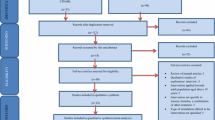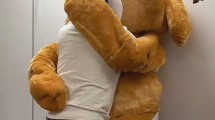Abstract
The human postural control function is determined by inputs from three senses, namely, vision, balance, and somatosensation. Many studies have attempted to induce body movements in arbitrary directions using external stimuli to maintain and improve postural control functions. Previous studies demonstrated that sensory information from the plantar region of the foot is involved in the understanding of front–back position and regulation of body movements. In the present study, we investigated a method to induce postural control and walking movements in an arbitrary direction by presenting matrix-shaped tactile stimuli (MSTS) to the plantar region of the foot. We developed a tactile stimulation device to investigate body sway when the MSTS was presented to the dorsal surface region of a foot in a standing posture. This device is envisioned to be used as a wearable guidance tool in the future. In addition, the measurement experiment used a high-speed camera and an accelerometer placed on the top of the subject’s head to track the subject’s movements in response to the MSTS presented by the device. In this paper, the relationship between the control parameters (L, T) of tactile stimulation MSTS and body sway and its direction was considered. The results showed that the introduction of MSTS on the sole of the foot could induce body sway. The results also suggest that it is possible to induce body sway in the respective expected directions by setting appropriate parameters (L, T).














Similar content being viewed by others
Data availability
The video data acquired in our experiment will be available for provision upon completion of the prescribed procedures.
References
Pfeiffer M, Dünte T, Schneegass S, Alt F,Rohs M (2015) Cruise control for pedestrians: Controlling walking direction using electrical muscle stimulation. In: Proceedings of the 33rd annual ACM conference on human factors in computing systems 2015, vol 15, pp 2505–2514
Watanabe N, Mori F, Omori T (2013) Pedestrian guidance model using optical flow stimulation to peripheral vision and body motion. J Inst Image Inform Telev Eng 67:J434–J440
Ito Y, Nakajima K, Kishino F (2014) A hairlike tactile display capable of changing the sensation of hardness and softness in a specific area play. Trans Virt Real Soc Jpn 19:581–584
Yamamoto T, Imai Y, Izumi T, Shiragin S, Kojima S, Tanaka T, Ino S, Ifukube T (2002) Perceptual characteristics of orientation information by vibrotactile stimulation to the abdomen. IEICE Technical Report, Technical Report of IEICE 2002, pp 25–30
Nurse MA, Hulliger M, Wakeling JM, Nigg BM, Stefanyshyn DJ (2005) Changing the texture of footwear can alter gait patterns. J Electromyogr Kinesiol 15:496–506
Fujiwara K, Ikegami H, Okada M, Koyama Y (1982) Involvement of age and lower limb muscle strength in stability of standing posture. Mank Mag 90:385–400
Büssow R (2007) An algorithm for the continuous Morlet wavelet transform. Mech Syst Signal Process 21:2970–2979
Terada M, Uchida M (2019) Time series analysis of body sway caused by several matrix-shaped tactile stimuli on body trunk. Artif Life Robot 24:270–277
Acknowledgements
This work was supported by the JSPS KAKENHI Grant Numbers 22K12310.
Author information
Authors and Affiliations
Corresponding author
Additional information
Publisher's Note
Springer Nature remains neutral with regard to jurisdictional claims in published maps and institutional affiliations.
About this article
Cite this article
Kobayashi, D., Sasaki, T., Hayashida, T. et al. Research on body sway caused by matrix-shaped tactile stimuli on dorsum of foot. Artif Life Robotics 29, 187–196 (2024). https://doi.org/10.1007/s10015-023-00925-4
Received:
Accepted:
Published:
Issue Date:
DOI: https://doi.org/10.1007/s10015-023-00925-4




